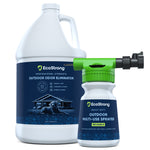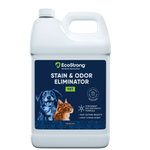The technology inside your RV has come along way in the past 100 years.
This includes your RV bathroom and the various things we flush down the toilet to treat the "you know what" inside of your holding tank.
We are going to review the different types of holding tank treatments available and the benefits and drawbacks of each.
We'll be judging these treatment types on their ability to eliminate odors, prevent clogs and how toxic they are.
Formaldehyde and other Chemicals:
✅ Odor reduction
❌ Prevents clogs and buildup
❌ Safe and non-toxic
Back in the days of drinking moonshine, formaldehyde was a popular way of reducing odors from holding tanks inside of RVs.
It works by encapsulating waste and killing bacteria thus reducing odors.
However that is about the only benefit of putting this nasty chemical down your RV toilet.
In fact, formaldehyde works against your systems natural biology by killing the bad AND good bacteria inside of your holding tank.
The good Bacteria works to to digest and break down the organic material inside of your holding tank.
You're more likely to experience waste build up and clogs without the waste liquification from these beneficial bacteria.
On top of this, formaldehyde is toxic chemical that is dangerous to handle and risky to store/transport.
Salts and other Minerals
✅ Odor reduction
❌ Prevents clogs and buildup
❌ Safe and non-toxic
Next came the introduction of salts and other minerals like zinc to RV holding tanks.
The performance from salts and minerals is not effected by hot or cold climates making it a versatile option for odor reduction.
With a similar approach to formaldehyde, the aim is to use chemistry to kill the odor causing bacteria in your holding tank.
But just like formaldehyde, these treatments can often be harmful if inhaled or ingested.
Enzymes
❌ Odor reduction
✅ Prevents clogs and buildup
✅ Safe and non-toxic
Finally we make the change from using chemistry to biology to treat our holding tanks.
Just like the enzymes inside our gut break down our food, the enzymes that can be added to a holding tank break down organic waste.
Naturally occurring, these enzymes help prevent clogs but do very little for odor reduction unless a fragrance has been added.
Just like the chemicals and minerals mentioned above, enzymes are versatile meaning they will work in hot and cold temperatures.
However, enzymes are far less toxic making them a more popular choice for treating holding tanks.
Bio-Enzymatics
✅ Odor reduction
✅ Prevents clogs and buildup
✅ Safe and non-toxic
Bio-enzymatics take the use of enzymes one step further by introducing live microbes or bacteria into your holding tank.
The enzymes act as the scissors cutting the molecules of the waste (breaking it down) while the microbes physically eat or digest the waste turning it into water and carbon dioxide.
This harmonious relationship reduces solids and eliminates odors all while being non-toxic.
The fact that the microbes are alive does mean that they will be effected by hot temperatures above 95 degrees Fahrenheit or below 60 degrees Fahrenheit.
Summary
We recommend using a high quality bio-enzymatic product to treat your RV Holding Tank.
It is by far the safest and most effective way to eliminate odors and reduce clog causing solids.

Click here to learn more about EcoStrong's RV Holding Tank Treatment.


















